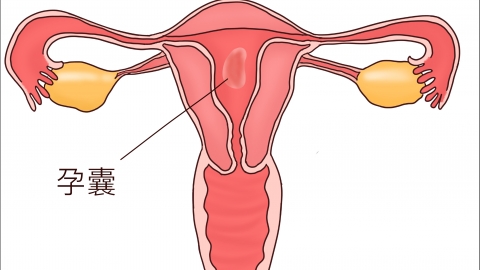What should be done if the gestational sac is 5 mm away from the scar?
Generally, scars refer to cicatrices. A 5mm distance between the gestational sac and the scar might be caused by random implantation of the fertilized egg, abnormal uterine morphology, uterine scar diverticulum, adenomyosis, intrauterine adhesion syndrome, and other factors. Treatment options include general therapy, medication, and surgical intervention under a doctor's guidance. Detailed explanations are as follows:

1. Random Implantation Site of the Fertilized Egg
The implantation site of the fertilized egg within the uterus is random and may happen to be near the scar. Since the implantation site cannot be controlled artificially, preventive measures are limited. However, maintaining a healthy lifestyle—including balanced nutrition, moderate exercise, and avoiding exposure to harmful substances—can help improve the quality of embryo implantation.
2. Abnormal Uterine Morphology
Some women may have congenital or acquired abnormalities in uterine morphology, such as uterine septum or adenomyosis, which can lead to abnormal implantation of the gestational sac. Regular gynecological examinations are recommended to detect and treat such abnormalities promptly, thereby reducing the risk of abnormal implantation.
3. Uterine Scar Diverticulum
Poor healing of cesarean section scars may lead to localized thinning of the uterine wall and formation of a diverticulum. The gestational sac may implant within or near the diverticulum, increasing the risk of complications. Symptoms may include prolonged menstruation or irregular vaginal bleeding. Treatment options include medications such as drospirenone and ethinyl estradiol tablets, tranexamic acid injection, and Gongxuening capsules, under a doctor's guidance.
4. Adenomyosis
Adenomyosis occurs when endometrial glands and stroma invade the myometrium, leading to abnormal uterine morphology. This can cause the gestational sac to implant abnormally, increasing the likelihood of proximity to the scar. It is often accompanied by symptoms such as dysmenorrhea and menstrual irregularities. Patients may follow medical advice to use medications such as dienogest tablets, aspirin capsules, or mifepristone tablets.
5. Intrauterine Adhesion Syndrome
Intrauterine adhesion syndrome may result from endometrial injury caused by intrauterine surgery or infection, leading to adhesions that alter the uterine cavity morphology and affect the implantation site of the gestational sac. Symptoms may also include amenorrhea and infertility. Under medical guidance, hysteroscopic adhesiolysis can be performed, using micro-scissors, electrocautery loops, or other instruments to separate the adhesions and restore normal uterine anatomy.
Routine gynecological examinations are recommended to detect and treat abnormalities in uterine morphology promptly, thereby reducing the risk of abnormal implantation of the gestational sac.





